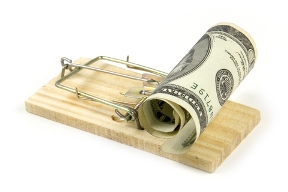If I owned a tattoo shop for businesspeople, I’d ink the same thing over and over onto client after client: Life gives to the givers and takes from the takers.
It’s not just pithy, you know—it’s true. If you want to put your business on the receiving end of the giving, it’s time to dig in and give like crazy to your customers. The key is to abandon the terrible goal of “customer satisfaction.” You don’t want satisfied customers. You want customers who are passionate.
Comedian Demetri Martin gets at the difference between satisfaction and passion when he calls graffiti “the most passionate literature there is.” It’s always something like “U2 ROCKS!” or “I LOVE SHERYL!” He wonders why you never see “indifferent graffiti,” like “TOY STORY 2 WAS OKAY,” or “I LIKE SHERYL AS A FRIEND,” or “THIS IS A BRIDGE.”
Of course he knows why, and so do you. That’s why it’s funny. People don’t act on mere satisfaction. They don’t express mere contentment in five-foot-high spray-painted letters. They act on PASSION. And the best thing you can do to turn your market into a buzzing hive of passionate customers is to spend the first 90 days of your relationship giving and giving and giving. And giving.
Research has shown that businesses with ongoing client relationships (as opposed to one-time transactions) generally have 90 days to convince the client that they’ve chosen the right business. Let those 90 days expire and you’ve lost the best chance you’ll ever have to capture them heart and soul, earning their undying devotion—and getting them to buzz to their friends and colleagues about the great decision they made. Yet many businesses close the sale, then turn their attention to other sales, other prospects. And the honeymoon’s over before it even begins.
You want to make those first few weeks a time of tremendous generosity on your part so your new client knows beyond a shadow of a doubt that he or she made the right choice. Short, sweet, personal touches are best. If you know your client is relocating, send a pizza during move-in week. Send over a lawn-mowing service. Promote their businesses in your lobby. Send laminated articles pertaining to their business or offer shredding service. Offer a customer orientation program to help them maximize their own potential.
If you let your customers know that you are not just satisfied but THRILLED to have their business and eager to make their lives easier and better, why on Earth would they keep it to themselves? Your name will end up in a thousand sentences beginning with “Oh my gosh, you won’t believe…” as they share their good fortune with everyone they know. Be of extraordinary service to your customers, especially in the first blushing weeks of your relationship, and you won’t be able to STOP the buzzing even if you tried.
And who’d even want to try?



